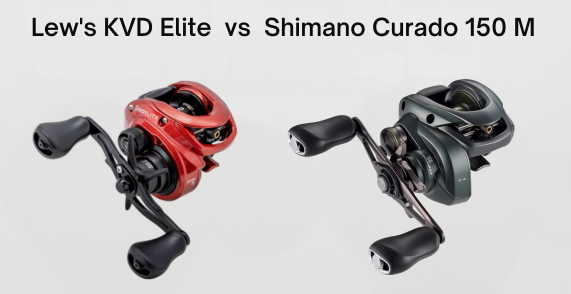Picture this: you’re sitting by a serene, burbling brook, fishing rod in hand. The sun is playing hide and seek with the clouds, creating dappled patterns on the water.
Suddenly, there’s a tug at your line – the thrill of a catch! You pull up a sleek, silvery creature – a beautiful trout. Now comes the next big question: What’s it going to taste like?
Well, my friend, prepare to embark on an enlightening culinary journey as we dive into the world of cooking trout. Trout has been considered a delicacy since ancient times, celebrated far and wide for its delicate texture and sweet, nutty flavor.
Let me peel back the scales and guide you through everything from proper preparation techniques to taste profiles.
Yes, trout is a great fish to eat. Rainbow trout, in particular, is recommended by doctors for its high nutritional value, including low levels of mercury, high Omega-3 fatty acids, vitamins A, D, and B12, and low-fat protein content. The taste of trout varies depending on the species, how and where it was caught and what it feeds on; rainbow trout has a mild and delicate flavor that is slightly nutty and sweet while other species like brown trout have a stronger and fishier taste.
Trout can be cooked in various ways such as pan-fried, battered, grilled or baked seasoned with herbs like thyme, dill, garlic or lemon for added flavor.
In This Post
Why Trout Are Good Eating
Trout is a favorite among anglers and seafood lovers alike, prized for its mild yet distinct flavor and delicate texture. But what makes this fish so appealing as a meal? For one thing, trout is a versatile ingredient that can be prepared in various ways – from grilling to baking to pan-frying – making it an excellent choice for novice cooks and experienced chefs alike.
Beyond its culinary appeal, trout is also a healthy source of protein and essential nutrients such as Omega-3 fatty acids, vitamins A, D, and B12, and minerals like iron and calcium. In addition, trout contains low levels of mercury compared to other types of fish, making it a safer option for regular consumption.
But perhaps most importantly, the taste of trout is simply delicious. Whether you prefer the subtle nuttiness of rainbow trout or the richer, more savory flavor of brown or lake trout, there’s no denying that this fish has a unique and satisfying taste that keeps people coming back for more.

For many people, eating trout holds special significance beyond just its flavor and nutritional value. For those who grew up fishing with family or friends, catching and cooking trout may hold cherished memories and traditions that bring them closer together.
For those who live near mountain streams or lakes where wild trout populations thrive, catching and cooking your own food can be a vital part of living off the land and connecting with nature. In these cases, the appeal of trout as a food goes beyond just taste – it represents a way of life and a connection to the natural world that is hard to put into words.
- According to the American Heart Association, trout, being a cold-water fish, contains high levels of Omega-3 fatty acids which are known to reduce inflammation, improve heart health, and support brain function.
- A study by the Environment Agency and Public Health England found that rainbow trout contains significantly low levels of mercury, making it safe for regular consumption.
- With 20 grams of protein in a 3-ounce serving, eating trout also contributes a significant amount towards the recommended daily intake of protein (46 grams for women and 56 grams for men) according to the National Institutes of Health.
Nutritional Value of Trout
In addition to Omega-3s, trout also contains high levels of protein – about 20% by weight – making it an excellent choice for those looking to build muscle or maintain a healthy weight. Trout is also relatively low in calories compared to other types of meat, with about 120 calories per serving (3 ounces).
But perhaps most impressively, trout is a great source of vitamins and minerals that are important for maintaining strong bones, healthy skin, and optimal nerve and muscle function.
Specifically, trout contains high levels of B vitamins like niacin and B12, as well as important minerals like magnesium, phosphorus, and selenium.
Overall, including trout in your diet can have numerous health benefits that go beyond just satisfying your taste buds.
Whether you’re looking to support brain function, build muscle mass, or simply enjoy a flavorful meal with friends and family, adding trout to your menu is a smart choice that offers both nutritional value and culinary appeal.

To illustrate the health benefits of eating trout, consider this anecdote: A friend of mine who struggled with joint pain for years found significant relief after incorporating more Omega-3-rich fish like trout into her diet.
She had previously relied on over-the-counter pain medication to manage her symptoms but noticed a marked improvement in her mobility and comfort levels after regularly consuming fish like trout.
Similarly, many athletes and fitness enthusiasts turn to lean proteins like trout as a way to fuel their bodies while also supporting muscle recovery and repair.
By prioritizing nutrient-dense foods like trout in their diets, these individuals are able to optimize their performance while still enjoying delicious meals that satisfy their cravings.
Now that we understand the nutritional value of trout more deeply, let’s explore some of the specific varieties of trout that are particularly well-suited to cooking and consumption.
Flavor Profile and Texture
Trout is known for its mild and delicate flavor, making it a crowd-pleaser among seafood lovers. The flesh of trout varies in color from pink to orange, depending on the species and their diet.
Rainbow trout is the most commonly consumed type of trout, which has a sweet and slightly nutty taste, while brown trout has a stronger and fishier flavor.
In terms of texture, trout has tender and flaky flesh that melts in your mouth when cooked right. Its meat is moist and juicy, with a fine-grained texture that lends itself well to various cooking methods like baking, grilling, sautéing, or poaching.
One key factor to keep in mind is not to overcook trout as it can result in dry and tough meat.
In my experience, rainbow trout tastes the best when cooked simply with lemon juice and herbs like dill or parsley. Adding too many spices or sauces can overpower its delicate flavor profile.

I once tried pan-searing a whole brown trout with garlic butter, but found its taste too strong for my liking. It really comes down to personal preference regarding which species you prefer and how you prepare them.
Nutritionally speaking, trout’s healthy attributes make it an excellent protein source with low-fat content. Besides being packed with omega-3 fatty acids that are essential for brain health and development, trout also contains vitamins A, D, B12, and potassium – all crucial nutrients that contribute to overall well-being.
Some people argue that farm-raised trout tastes less flavorful than wild-caught ones due to the difference in their feed and living conditions.
While this may be true to some extent, most commercial farms nowadays maintain high standards of raising their fish under sustainable practices that ensure quality

Farm-raised trout tend to have more consistent flavor year-round than their wild cousins, whose taste may vary depending on the time of harvest.
With so many varieties of trout available to choose from, it can be hard to decide which ones to try. Let’s go over some of the options:
Saltwater Versus Freshwater Trout
Trout can be found in both saltwater and freshwater environments. While both types of trout offer unique flavors, there are differences in their taste due to their habitat and diet.
Freshwater trout tend to have a milder flavor compared to saltwater trout. This is because freshwater trout feed on insects and small fish, resulting in a delicate flavor profile.
On the other hand, saltwater trout feed on crustaceans like shrimp and crabs, which gives them a stronger and nuttier flavor. As they migrate from salt to fresh water or vice versa, they develop different flavors due to changes in water temperature and food availability.
Another factor that affects the taste of saltwater versus freshwater fish is the type of water they inhabit. Saltwater trout tend to live in open waters with varying salinity levels, while freshwater trout thrive in clear mountain streams or rivers with consistent temperature and chemistry.
As a result, freshwater trout tends to have a cleaner and crisper taste than saltwater trout since they are living in unpolluted environments.
Ultimately, the decision between choosing saltwater or freshwater trout comes down to one’s personal preference in taste. If you prefer fish with a stronger flavor or if you enjoy seafood dishes with a nutty taste, then saltwater trout may be your best choice.
If you prefer lighter flavors with a subtle sweetness that complements various seasonings and herbs well, then freshwater trout may be more up your alley.
When searching for recipes online, you may find that certain cooking methods work better for one type of trout versus the other.
For instance, grilled saltwater trout may require more oil due to its drier texture while a baked freshwater trout could be cooked lightly with lemon juice or butter since it contains less oil.

Choice Varieties of Edible Trout
Trout is a diverse species of fish that thrives in freshwater rivers, lakes, and streams around the world. When it comes to edible varieties, there are several options to consider based on your preference for taste, texture, and availability.
Rainbow Trout: This is one of the most common trout species found in North America. It has a delicate, nutty flavor with a moist and firm texture that makes it perfect for various cooking techniques like frying and grilling. Rainbow trout is often sold as fillets or whole fish and is widely popular due to its mild flavor profile and versatility in cooking methods.
Brown Trout: Brown trout is another popular choice among fishing enthusiasts who enjoy its stronger and earthy taste. This fish has a richer flavor with a firmer texture than rainbow trout. If you’re looking for a fish that tastes similar to salmon but without the oily aftertaste, brown trout may be your best bet.
Brook Trout: This species delivers a sweeter taste that is often likened to salmon with its pink flesh hue. It has pink flesh with a mild and sweet taste compared to other varieties. It’s easy to prepare and commonly used in stews or soups due to its small size.
Lake Trout: This larger fish has a stronger taste compared to other types of trout due to its carnivorous diet, which includes smaller fish. However, when cooked properly, it has a flaky and tender texture that pairs well with smoky flavors like bacon or paprika.
It’s a bigger fish with firmer meat than rainbow or brown trout due to spending more time in the water. Although it has a milder taste than other types of trout, it still retains its nutritional value with lower levels of mercury and high omega-3 content.
There are a few other trout species that have distinctive characteristics, much like wine varietals that offer distinct aromas and flavors. For instance, cutthroat trout has a subtle peachy color and nutty taste while arctic char boasts a rich red color similar to salmon, with a buttery texture.
When selecting trout for eating, consider factors such as where the fish was caught and how it was raised. Farm-raised trout tends to have higher fat content than wild-caught trout and may contain antibiotics or harmful chemicals.
Some seafood purists might argue that farmed trout lacks the same depth of flavor as wild-caught ones because of their feed.
On the other hand, farming allows for year-round harvesting and control over factors such as quality assurance checks, flexible supply chains, and ensures consistent availability for consumers.
When buying fish at the supermarket, look for clear eyes, bright skin, and no foul odor to ensure that they are fresh. If you’re unsure about which species of trout to pick out or how to cook them properly, don’t be afraid to ask your local fishmonger for advice.
Much like choosing between saltwater or freshwater trout, choosing the right species for consumption comes down to your personal taste and preference.
Whenever possible, choose wild-caught trout from reputable sources and experiment with different types of trout to find the perfect one that suits your culinary (and taste!) needs.
Preparing and Cooking Trout
Trout is a versatile fish that can be cooked in various ways, making it an excellent choice for any meal. When preparing to cook trout, the first step is to clean the fish thoroughly.
Rinse the fish under running water, removing any scales, guts or debris from the inside and outside of the fish. Pat the fish dry with a paper towel before seasoning.

It’s important not to overcook trout since it can become tough and dry quickly. The cooking time will depend on the size and thickness of the fillet or whole fish. One of the easiest and simplest ways to cook trout is by pan-frying it, which gives it a crispy exterior while keeping the inside moist and tender.
If you’re feeling adventurous, you can also try grilling or baking your trout. Grilling allows for a smoky flavor while baking maintains its natural sweetness without adding extra calories. Whichever method you choose, remember that trout cooks fast and requires minimal seasoning.
For instance, when baking the trout, an easy method is to brush some olive oil on both sides of the fillet and season lightly with salt, pepper, garlic powder, and paprika. Bake at 375°F until it flakes easily with a fork but ensure not to overcook as mentioned earlier.
Now that we know how to prepare trout let’s dive into various herbs and techniques that can help enhance its natural flavors.
Recommended Seasonings and Cooking Techniques
As far as seasonings go, there are many good options for enhancing your trout’s natural flavors without overpowering them.

Some popular herbs include thyme, dill, parsley, rosemary, cilantro among others. Citrus like lemon or lime juice enhances that nutty sweetness of the trout while providing balance vital to taste acquisition.
For instance:
– You can sprinkle fresh thyme leaves over the trout fillet before grilling or frying, giving natural earthy notes.
– You can mix paprika and garlic powder in a dish, then rub your trout with it before pan-frying to add some spicy flavor.
– You can also use white wine instead of lemon juice to deglaze the trout’s pan after cooking for a different taste.
When it comes to cooking techniques, there are plenty of options that work well. Pan-frying your trout can happen in many ways including by dusting it with cornmeal mixed with flour to give you that crispy exterior texture. Baking allows for easy preparation and quick serving without much fuss.
Another popular method is grilling brushed with butter or olive oil. This produces perfect grill marks while infusing a smoky flavor into your fish.
For instance:
– To up your game when pan-frying, try using panko flakes instead of cornmeal making for an extra crunchy texture.
– When grilling, simply charcoal-grill over hickory or oak wood chips to impart that smoldering rich and unique flavor typically reminiscent of campfire nights.
Trout is great because it’s flavorful enough to stand on its own, so don’t go overboard with seasoning; two or three spices are all you need for a delightful meal.
Remember always buy fresh trout from trusted fishmongers and follow food safety guidelines when preparing your food.

Health Benefits of Including Trout in Your Diet
Trout is a highly nutritious food that can offer several health benefits when included in your diet. Doctors recommend it due to its low levels of mercury and high nutritional value.
It contains various nutrients, including high omega-3 fatty acids, vitamins A, D, and B12, and low-fat protein content, which are essential components for healthy living.
Omega-3 fatty acids can improve heart health by reducing inflammation, decreasing triglycerides and blood pressure, lowering the risk of heart disease.
Trout offers DHA and EPA types of omega-3 fatty acids which have been shown to support good eyesight, brain function and cognitive development in infants.
In addition, Vitamin B12 is found abundantly in trout; this nutrient aids in the production of red blood cells, promotes a healthy nervous system and improves mental clarity.
Trout has a low glycemic index thanks to its low carbohydrate content making it an ideal protein source for individuals with diabetes or those looking to manage their blood sugar levels.
While some people may be skeptical about the potential risk of consuming fish due to contaminants like mercury and other heavy metals present in oceans around the world, the risks associated with farmed trout is minimal.
Here’s an interesting study by Harvard University on the benefits of having fish in your diet
As an environmentally conscious way to feed a growing population without over-fishing wild stocks or risking exposure to pollutants present in wild fish stocks, farmed or freshwater-raised trout is a safer choice.
Think of adding trout to your diet like adding another piece to a puzzle that completes a beautiful picture – your health! It’s about choosing wisely where you source your fish from. Plus, there are many delicious ways you can cook trout accentuating its delicate nutty flavor profile while taking advantage of its numerous health benefits.
The bottom line is this – Including trout in your diet offers remarkable benefits for people of all ages. The low-fat protein content, essential nutrients, and low glycemic index make it the perfect food for weight management, diabetes management, heart health, and cognitive function.







